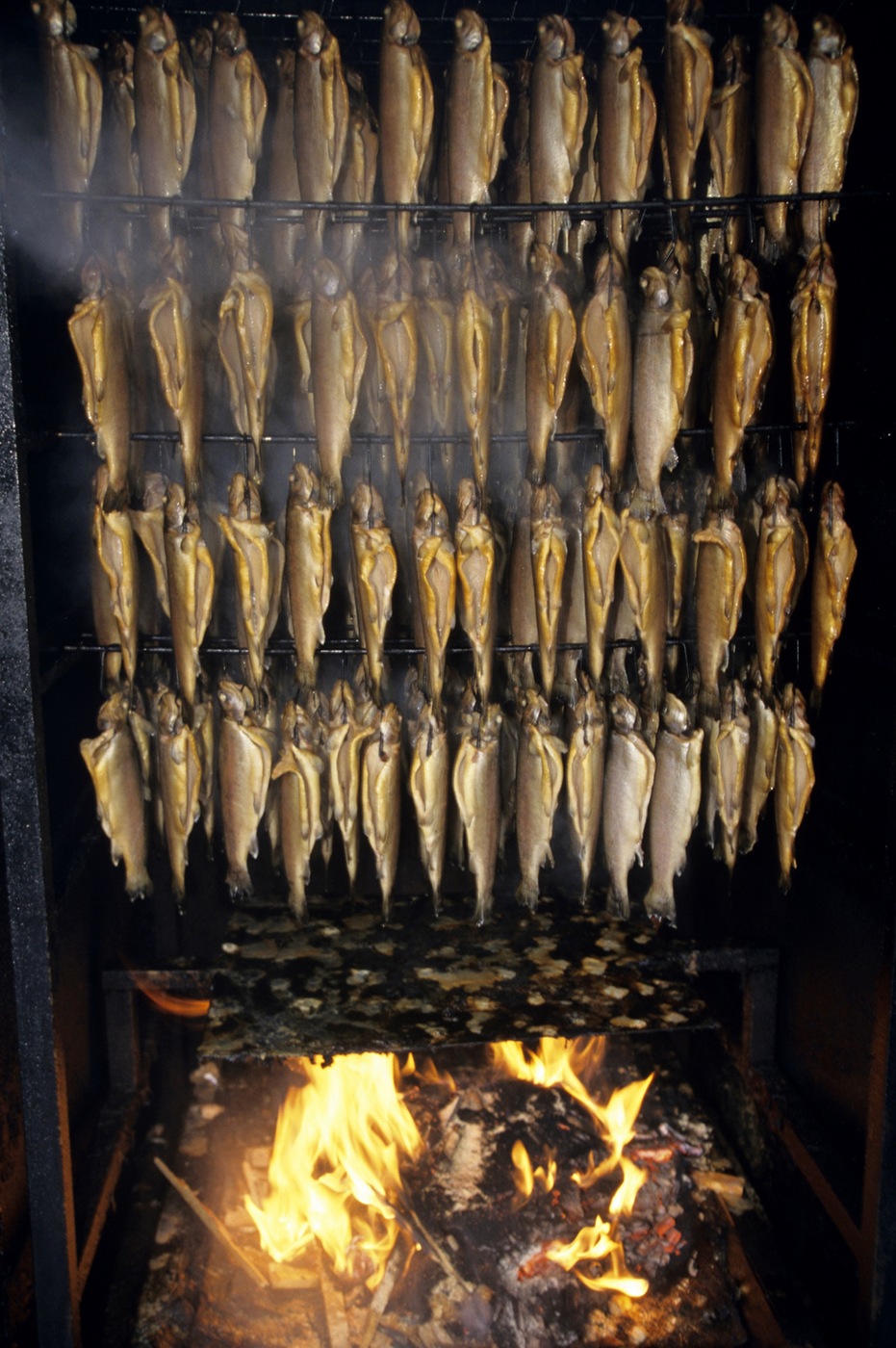Smoking
Smoking is a very ancient way of processing food, developed when mankind first learned how to control fire. It is used to preserve meat and fish, subjected to the drying action of smoke over several days. Smoking is often preceded by salting. It brings colour to food as well as different tastes. At the end of the smoking process, the new finished product is ready for consumption.
Smoking, a universal technique
Smoking is a very ancient method of preserving food, no doubt known since the Paleolithic era. It is a technique used to preserve meat and fish in particular and is practised throughout the world. In the Caribbean, for example, this process is called boucanage from the word buccan or boucan, which refers to the wooden frame the natives use for smoking meat.
Purpose and techniques of smoking
Microorganisms become much less active when exposed to smoke. Smoke destroys germs and reduces the amount of water available which may or may not bond with other molecules in the food. Smoking dehydrates food and also give it a distinctive colour and aroma.
The smoke comes from the slow burning of different types of wood, such as conifers, shrubs, vine tendrils and aromatic plants. Smoke consists of a wide range of volatile compounds which dissolve on the surface of the product to be preserved. The length of time food is smoked depends on the type of product.
Two types of traditional smoking exist: cold smoking, where the temperature of the smoke stays below 30°C and hot smoking, where smoke reaches 80°C in successive stages. Food smoked using the cold smoking process remains raw.
Nowadays, new techniques are being used, such as injecting smoke extracts or spraying smoke flavours over food. The food smoking process may have adverse effects on human health.
A rustic and a luxury product
Nowadays, the smoking process is relatively light compared to the process used during the last century. It imparts flavours which are very popular with 21st century consumers. Although smoked products are traditionally associated with home produce, like ham smoked in the borne, a smoking chimney typically found in the canton of Fribourg, some of them have become luxury food products, such as smoked salmon for example.
ROUX, Jean-L., 1994, Conserver les aliments. Lavoisier Tec Doc
PAULI, 1996, Technologie culinaire. Éditions professionnelles Philip Pauli 3e édition
VITAUX Jean, France Benoît, 2008, Dictionnaire du gastronome. Paris : PUF




